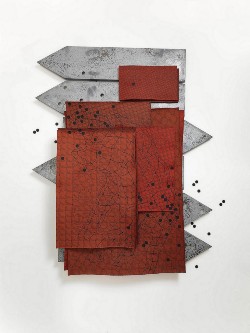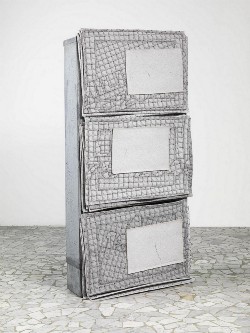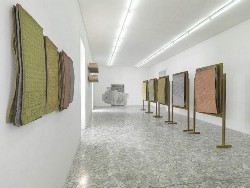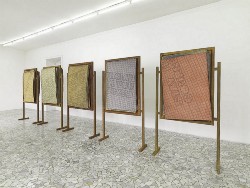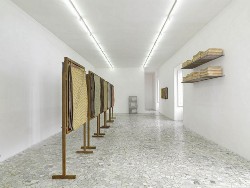public invasion
galleria alfonso artiaco - naples
Press review
Perino & Vele have always played with the ability of the spectators to recognize the reality in their sculptures. They show this reality through a new light: iconic but at the same time ironic. In Public Invasion the artists were inspired by the common use of the signs: from political ones and posters to funeral signs.
Perino & Vele adopt the theory that the sign, especially the poster, often is a typical element of the country and the society, which create it, for example the placard handwritten with black and red felt-tip pens. These repeatedly violate the rules of the attachment and of the publicity. Especially during the election campaign, the political candidate’s signs cover the garbage bins, roller shutters, junction boxes, and more. Public Invasion deals with this strange deportment.
The site-specific exhibition at the Alfonso Artiaco gallery opens with "It’s the right direction", the informative premise of the show, an installation made of galvanized iron indicators placed as road signs which indicate the entrance but at the same time the exit and create an obliged path. The spectator is directed to a space where he feels himself hemmed in a series of different contents. "Silvio Berlusconi vs Vladimir Putin", "Carol Wojtyla vs George W. Bush", "Osama Bin Laden vs Mahmud Ahmadinejad", "Achille Bonito Oliva vs Mary Carey", "Neil Young vs Deng Xiaoping" takes up the main space of the gallery. This is an installation of about 7 metres constituted of five posters, as they can be seen on the roads, where there are slogans and funny and odd messages of the political and cultural personalities. The posters usually take up places not established for this use contributing at the damage of the illegal attachment. The exhibition is concluded with a monochrome wall installation where the information is not political or like publicity but about the people. "Uno dopo l’altro" is a junction box where funeral signs show the date of the artists’ birth and death.
More than 100 papier-mâché signs, of different dimensions and all drawn with pastel and Indian ink, are offered to the spectator for being read individually or together, creating several contents.

